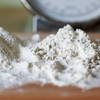Culatello: The King of Cured Meats
For centuries, Culatello’s fame was celebrated only near its place of origin, the Bassa Parmense plains south of the Po river that extend west to Piacenza and east to Reggio-Emilia. People of the region knew to appreciate the taste of this very special kind of prosciutto and to safeguard its secrets. The first evidence of Culatello di Parma is in a document dating to 1735 from the Comune of Parma. The document lists prices for pork products, and it’s also the first time “Culatello” is used before it became part of the popular vocabulary.
Other important accounts of Culatello date back to the 1800s and 1900s in the works of Giuseppe Callegari, a poet from Parma, and in the correspondence between sculptor Renato Brozzi and the celebrated poet Gabriele D’Annunzio. Culatello has long been considered a noble food. Even as a purely local food, Culatello was a luxury, a “rare and exquisite” delicacy that only few could afford to afford to have on their tables, and for a long time, Culatello remained a product for the few, limited in its production and geographic distribution. Only since the 1980s has its fame and consumption spread beyond the borders of the Bassa Parmense.
Production and Procedure
Culatello is commonly identified as pork cured in a natural casing usually made from pig’s bladder. It has received the prestigious “Protected designation of origin” recognition (Denominazione d’Origine Protetta, or DOP given to food products whose unique characteristics depend exclusively on the specific techniques and on the area in which the product is made. Every year, more than 60,000 Culatello di Zibello are stamped with the DOP certifying seal and also with the names of the producers that adhere to the Consortium of Culatello di Zibello’s standards. This is a further guarantee of its distinctiveness and authenticity. The alternation between dry and humid periods in the area of production makes Culatello unique--production occurs between November and February, and climate is fundamental for the process. The towns of Busseto, Polesine Parmense, Zibello, Soragna, Roccabianca, San Secondo, Sissa, and Colorno are some of the most notable places for production and aging. The pigs used to produce Culatello must be raised in Emilia Romagna or Lombardy.
Production Method
Bundles of fillet or loin muscle from the hind legs of these protected pigs—the best of the same general cuts used for prosciutto-- are cleaned and cut into a pear shape. The meat is salted by hand in a process lasting anywhere from one to six days. Next, the muscle must be refrigerated between 32°F and 41°F, so that it can absorb the salt. It is then put in another room before it is encased intestines and tied up. Aging occurs in specific locations in temperatures between 55°F and 63°F for at least ten months. Finally, the Protected designation of origin “Culatello di Zibello” is applied to the label, and it’s ready for sale. To best preserve the Culatello once it’s opened, spread a small about of olive oil and butter on the part that was cut. Wrap it in a linen cloth that has been steeped in dry white wine, and store it in a cool area, not in the fridge as that would diminish the flavor.
Taste and Characteristics
Culatello is a delicate and sweet cured meat with an intense smell. When it is cut, the meat has a uniform red color with white fat between the various muscle bundles. It is an excellent source of energy: 3.5 ounces of Culatello contains approximately 200 calories with 15% fat content. This includes unsaturated fat and an extremely low percentage of cholesterol. It’s digestible and perfect for any age and pleasing to all palates. Culatello has a unique taste and an unmistakable smell. It pairs perfectly and simply with a slice of bread, and makes a great appetizer when served in hand-cut slices and accompanied by Parmigiano-Reggiano or butter. It can also go well with a nice glass of Malvasia, an intense, sparkling wine from Emilia-Romagna that pairs particularly well with long-aged meats. For optimal consumption, this cured meat must be treated and preserved with care. If it has been long aged, it must be first be softened with lukewarm water. Then, spread a small amount of olive oil and butter on the cut surface before wrapping the piece in a cloth that has been steeped in dry white wine. Store in a cool area, but not in the refrigerator, which would compromise its inimitable flavor.







































i-Italy
Facebook
Google+
This work may not be reproduced, in whole or in part, without prior written permission.
Questo lavoro non può essere riprodotto, in tutto o in parte, senza permesso scritto.